If you are an avid birder, or you are a wildlife enthusiast, you probably know by now that a decent pair of binoculars are a must have. The problem is that there’s just so many to pick from, and it’s tough to know what sort of binoculars you should be opting for. In this article we’re listing our picks for the best wildlife binoculars, and we hope that we can shed a little more light on binoculars in general to help you make an informed purchase.
There’s a lot that goes into a set of binoculars. From the magnification power to the lens diameter, compact size to full size, prism type and eye relief, there’s seemingly an endless number of variables that are in the mix. It’s not hard to feel a bit overwhelmed when trying to make a choice. You might just be inclined to go to your default instinct: bigger is better! Pump the brakes a bit there, bigger is most definitely not always better. It depends a lot on your use case. For whale watching, you more than likely will want the slightly bigger binoculars that have a higher level of magnification power. For birdwatching, you more than likely want something with less magnification power. It has a lot to do with the distance from your target, and also the relative size of the target animal you’re watching as well.
Later in this article, after we’ve gone over our 5 picks, we’re going to talk a little bit more about all the fancy numbers and measurements that go into defining a pair of binoculars. Ideally, you should come out of this guide having a better idea of what to look for and knowing exactly what kind of binocular you want to purchase.
1. Nikon 7237 Action 7×36 EX Extreme All Terrain Binocular
While the magnification power and lens diameter are traditionally less than what we generally recommend for birding (we recommend 8×42), they get a spot on our list because of how these binoculars feel at a decent size (at 7.95×3.78×7.32 inches) and their relative durability to price point. Weighing in at around 2.5 lbs, these binoculars feel nice to the touch with their rubber armor and firm grip. This grip will especially help out those birders who are venturing out in less than ideal weather conditions, and with the Nikons being waterproof as well, you can feel safe bringing these along on a rainy hike and not worry about fogging or potential damage.
| Weight | Dimensions | Magnification | Objective Lens Diameter | Water Resistance |
|---|---|---|---|---|
| 2.5 lbs | 7.95 L x 3.78 H x 7.32 W inches | 7x | 36mm | Waterproof |
2. Nikon 7577 MONARCH 5 10×42 / 8×42 Binocular
These Nikon 7577 are smaller than their 7237 counterparts yet boast a slightly better eye relief of 19mm, making them a good option for those who wear glasses. Coming in at 5.7 x 5.1 x 2.4 inches and 1.3 lbs, these binoculars are very compact and can easily fit inside a small pouch or pocket on your jacket or birding vest. Nikon’s Dielectric High-Reflective Multilayer Prism Coatings really help create a very accurate color reproduction of your viewing window, without any distortions due to light dispersion. The eye cups are a pleasant addition, making it easy to raise these binoculars up to your face and look through them with good form, without taking your eyes off of the target.
| Weight | Dimensions | Magnification | Objective Lens Diameter | Water Resistance |
|---|---|---|---|---|
| 1.3 lbs | 5.7 L x 2.4 H x 5.1 W inches | 8x / 10x / 12x options | 42mm | Waterproof |
3. Celestron Nature DX 8×42 Binoculars
The Nature DX binoculars were named a top pick by the Cornell Lab of Ornithology, and beginner to intermediate birders could hardly go wrong choosing these sleek looking binoculars. The grips conform very well to your hands, dramatically reducing strain as you hold the binoculars up to your eyes. With an eye relief of 18mm, they are very glasses friendly. These binoculars are a great pair if you want easy, functional binoculars that “just” work: if you’re the type that prefers not to tweak focus parameters and positioning as much, and instead want to enjoy the view, these could be a really great buy for you. The Nature DX are a really great value that more than likely won’t break the bank.
| Weight | Dimensions | Magnification | Objective Lens Diameter | Water Resistance |
|---|---|---|---|---|
| 1.75 lbs. | 5.3 L x 2 H x 4.9 W inches | 8x / 10x / 12x | 42mm / 32mm / 56mm | Waterproof |
Need a great digital camera to go along with your binoculars? We’ve got you covered! Check out our picks for the 7 best cameras for wildlife photography here.
4. Vortex 10×42 Optics Viper HD Binoculars
Weighing in at 2.7lbs and almost 9 inches in length, these are one of the heftier binoculars in our list. If you have strong hands and a steady grip, they could give you a very rewarding viewing experience provided the extra weight does not wear your forearms out. They come in various different magnifications, so you can choose the right binocular for the kind of distance viewing that you will be doing. We’ve highlighted the 10x magnification here, but an 8×42 option is also available (as you are aware, that is generally what we recommend for beginning birders). The image comes in very sharp. The quality and image actively compete with what you would experience with much higher end binoculars like Swarovskis.
| Weight | Dimensions | Magnification | Objective Lens Diameter | Water Resistance |
|---|---|---|---|---|
| 2.7lbs | 8.7 L x 3.8 H x 7 W inches | 10x / 12x / 8x | 42mm / 50mm | Waterproof |
5. Vortex Optics Razor HD Binoculars
The Vortex Optics Razor HD is the lightweight cousin of the Vortex Optics Viper HD listed above, coming in at just over 1.5 lbs. They come in multiple different magnification options: even though we have linked to the 10x42mm, there is an 8x42mm also available within a similar price range. The Vortex Optics Razor HD boasts some fantastic brightness under low light conditions, making them a great option for birders observing in the near twilight hours or the budding astronomer. These binoculars compete directly with the European luxury brand Swarovski and birders rave about the quality.
| Weight | Dimensions | Magnification | Objective Lens Diameter | Water Resistance |
|---|---|---|---|---|
| 1.55lbs | 9.5 L x 4.25 H x 8 W inches | 10x / 8x / 12x | 42mm / 50mm | Waterproof |
Picking The Best Wildlife Binoculars For You: Common Questions
What Is The Objective Lens Diameter?
Binoculars are typically measured by 2 different values: the magnification level, and the objective lens diameter. The diameter of the objective lens is the measurement of the lens in the binoculars that is furthest away from you as you are viewing wildlife — the larger lens. Generally speaking, the larger the objective lens, the more light is allowed in to the binoculars allowing you to see with even greater detail.
8x or 10x, which is best?
Most birders tend to prefer 8x because of the better stability. Think about it: as you’re standing there holding the binoculars, unless if you’ve got rock solid hands, they may flinch and waiver a bit. Smaller, lighter binoculars can help with this, but with an 8x scope you have a wider field of view, which will lessen the impact of having a case of the shakes.
That said, if you are primarily viewing wildlife from a great distance away (across a large body of water, for instance), then you may want to opt for 10x with a decently high objective lens diameter. If you are a whale watcher, odds are very high that you will more than likely be pretty far from the whales and you should probably be looking at 10x magnification.
Generally speaking, for most folks, the best wildlife binoculars for their particular use case will more than likely be 8x.
What is Eye Relief?
The eye relief of a set of binoculars is the ideal distance between the binoculars and your eyes for optimal viewing. If you wear eyeglasses, you need to be especially aware of a pair of binoculars’ eye relief in order to get the best experience, because you have a buffer between the binoculars and your eyes. The ideal eye relief is 16mm or more. The binoculars we’ve listed here in this article all have great eye relief, and should work out great if you wear eyeglasses (or don’t!). Binoculars with an 8x magnification generally speaking will have a better eye relief than those with 10x.
If you choose binoculars with smaller eye relief, you may not be able to get the full picture as you look through the lens. The overall picture will look much narrower. Here is a fantastic YouTube video explaining eye relief, and why it’s very important for your comfort when choosing the right binoculars for you:
What Size Binoculars Should I go For?
If you are birdwatching or viewing wildlife, you should opt for mid size to full size models (8×32 to 8×42 are very popular). If you’re stargazing, you probably want to grab higher zoom and objective lens diameter binoculars, probably somewhere around 10x52mm. If you simply want some binoculars for when going on a hike, we would recommend 8×28.
How resistant are binoculars to water?
Generally most binoculars will be listed as being “Waterproof”, “Weather resistant” or “None” in terms of weather protection. There isn’t any scenario where you would want to dunk your binoculars in the ocean and hold them down there, or any high pressure water environment. Most binoculars protect their internals with a tight rubber seal and rubber coating, to prevent water from doing any damage to internal components. Generally, here’s what you can expect:
- Waterproof: can survive a quick splash or accidental drop in a pond for a brief period of time (pick it up!)
- Weather resistant: can survive some light rain
- None: keep them away from water altogether!
Our experience is: despite being listed as “waterproof”, you generally want to protect your binoculars from water at all costs. The seal will only last for so long. While your new pair of binoculars may resist one accidental water related “episode”, they may not be so lucky on the next. The fact of the matter is, water is a destructive force.
Final Word
Hopefully, this article was able to help you in picking out the best wildlife binoculars for your particular use case. Whether you are a birder or another kind of wildlife enthusiast, these binoculars should have you seeing much more clearly! Have any comments or recommendations of your own? Drop us a line below in the comments.
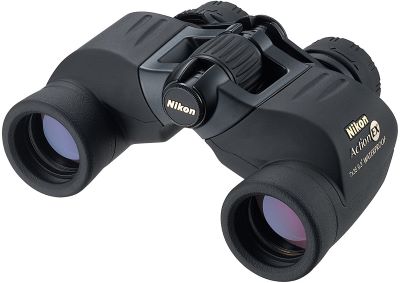
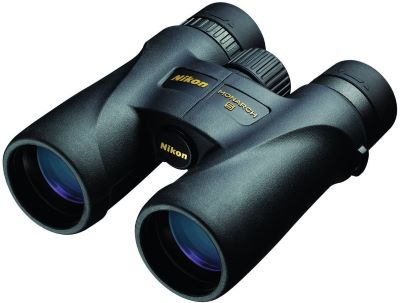
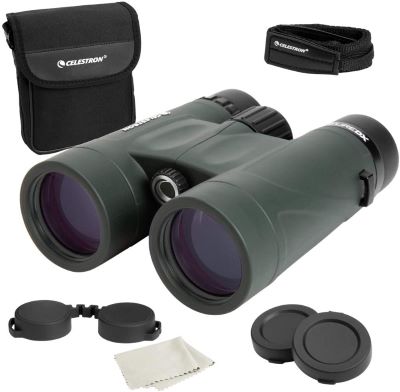
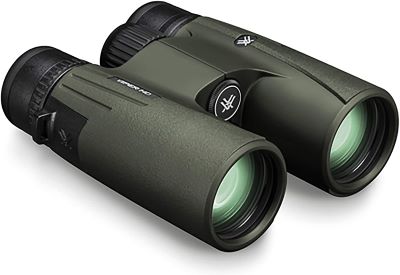
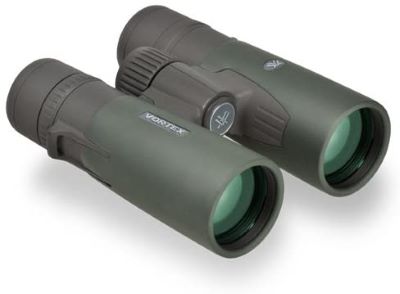
Leave a Reply